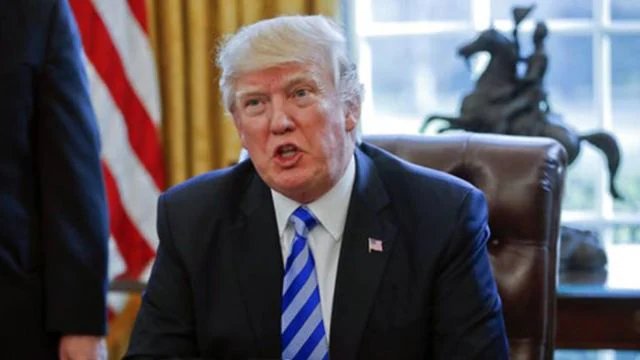Donald Trump to impose Tariffs: President Donald Trump’s decision to impose sweeping tariffs on steel and aluminium imports officially took effect on Wednesday, raising duties on all such imports to 25 per cent, up from the 10 per cent previously imposed on aluminium. This latest move is part of Trump’s ongoing efforts to reshape global trade and bolster domestic manufacturing. However, the escalation is likely to have far-reaching implications for global trade dynamics, particularly for countries like India, whose steel sector is already grappling with rising imports and fears of a market glut.
Trump has removed all exemptions from the tariffs he enacted in 2018, increasing the tariff on aluminium from 10% as part of a broader initiative to disrupt and transform global trade. He has also implemented separate tariffs on Canada, Mexico, and China, with plans to impose similar taxes on imports from the European Union, Brazil, and South Korea, effective April 2.
Trump, addressing CEOs at the Business Roundtable on Tuesday, maintained that the tariffs would encourage foreign companies to invest in US manufacturing, bringing factory jobs back to American soil. “The higher it goes, the more likely it is they’re going to build,” Trump stated, reiterating his belief that the tariffs would lead to a resurgence of U.S. industrial capacity.
Reacting to the move, Australian Prime Minister Anthony Albanese said the tariffs were “entirely unjustified” and “against the spirit” of the nations’ “enduring friendship”. Australia was exempt from similar tariffs implemented during Trump’s first term. “This is not a friendly act,” said Albanese.
US stock markets have been hit hard, with the S&P 500 declining 8 per cent over the past month as fears of a trade-driven economic slowdown grow. Economists, meanwhile, have voiced concerns that while the tariffs may provide a short-term boost to US steel and aluminium producers, the increased costs could be detrimental to the wider manufacturing sector, which relies heavily on these metals.
“The higher it goes, the more likely it is they’re going to build,” Trump told the group. “The biggest win is if they move into our country and produce jobs. That’s a bigger win than the tariffs themselves, but the tariffs are going to be throwing off a lot of money to this country.” He also threatened to put tariffs of 50% on steel and aluminum from Canada, but he chose to stay with the 25% rate after the province of Ontario suspended plans to put a surcharge on electricity sold to Michigan, Minnesota and New York.
Reacting to Trump’s tariff threat, investors sold shares of steel manufacturers in Asian markets including India. Steel Authority of India (SAIL) shares on BSE slipped 4.67 per cent lower, shares slipped 3.11 per cent lower, JSW Steel slipped 2.20 per cent and Jindal Steel And Power Ltd declined 0.72 per cent. The Ministry of Steel in India had last year asked the Union Ministry of Commerce to impose a 25 per cent duty on steel products, citing a 80 per cent surge in steel imports from China to 1.61 million tonnes between January-July 2024.
The European Union said it will also impose counter tariffs on 26 billion euros ($28.33 billion) worth of US goods from next month in response to US tariffs on steel and aluminium, the European Commission said in a statement on Wednesday.
Official data showed that India’s exports of primary steel to the US in 2024 was $450 million. The US imported only $2.83 million worth of steel pipes, tubes, and related products from India last year. Exports of aluminum and related products to the US in 2024 reached $820 million.
Amid already rising steel imports in the country, the Ministry of Commerce and Industry has already begun a safeguard duty investigation on December 19 as major steel manufacturers under the Indian Steel Association (ISA) argued that there has been a sudden and sharp increase in volume of imports ever since US President Donald Trump imposed 25 per cent duty on steel in his first term.
In its letter to the Ministry of Commerce and Industry, the Indian Steel Association (ISA) said that beginning with the imposition of a 25 per cent duty under Section 232 by the US under its Trade Expansion Act, 1962, several countries have introduced multiple trade remedy measures against steel product imports. “The evidence indicates that 129 trade remedy measures were imposed by various countries against steel products between 2019 and 2023,” ISA said.
Reuters reported that the largest sources of US steel imports are Canada, Brazil, and Mexico, followed by South Korea and Vietnam, according to government data and the American Iron and Steel Institute. By a large margin, hydropower-rich Canada is the largest supplier of primary aluminium metal to the US, accounting for 79 per cent of total imports in the first 11 months of 2024.
